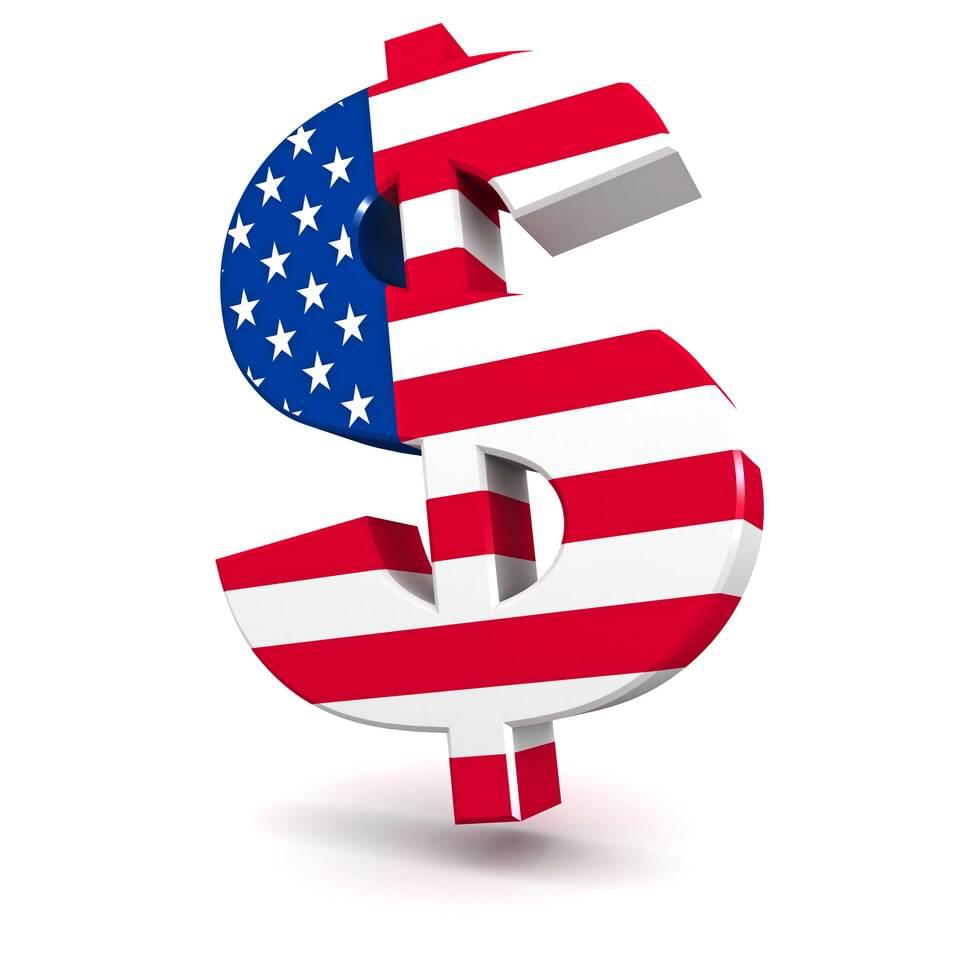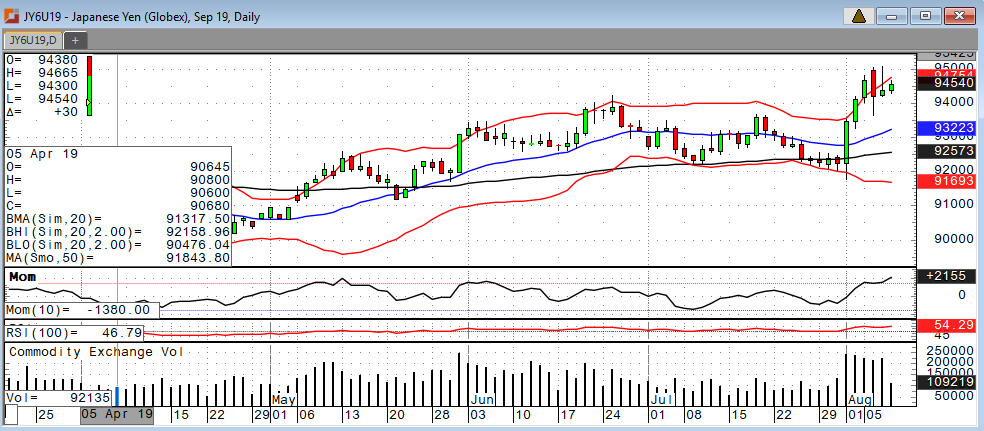
September U.S. dollar futures slid 10 points lower Thursday morning, continuing a consolidation pattern between 97.25 and 97.50 this week after last week’s intense volatility. The dollar attempted a breakout above the 98 level after a less-than-dovish Powell indicated the 25 bps July rate cut may be a “one & done” situation, but this breakout quickly faltered. Why? Enter President Trump. The commander-in-chief announced last Thursday that the U.S. is going to implement another 10% tariff on the remaining $300 billion of Chinese imports. The dollar plunged on this news as stocks sold off. China retaliated by allowing the yuan to trade through the critical 7:1 yuan to dollar ratio, effectively devaluing the Chinese currency. Both nations are attempting to manipulate domestic currency to gain an advantage in world trade. A weaker currency is more attractive to foreign buyers looking to get the most bang for their buck. Given increased trade war tension, the probability of a 50 bps September rate cut increased this week from 15% to 28%. As developed economies around the world follow suit, interest rates continue to move lower.
Talk of further cuts is now a common theme coming out of many central banks. Because U.S. rates are still higher than most other developed nation, the Federal Reserve has the clear advantage when it comes to using rate cuts to devalue domestic currency. However, Chinese President Xi does not have a central bank to contest with the way Donald Trump does. That could be their best weapon in this currency war. So which currencies will be the beneficiaries? Safe-haven currencies, like the yen and the Swiss franc, have been performing to the upside given the developing trade situation. The pound and the euro are still entrenched in bear tracks. Relative to slowing growth around the world, euro zone growth is the slowest (most notably in Germany, the largest EU economy). The prospect of a no-deal Brexit has not helped the pound catch support, but once this situation is in the rear-view mirror come November, the pound may reverse trend. Commodity currencies, like the Australian and Canadian dollar, are bouncing Thursday morning after correcting to the downside over the last couple of weeks. Should the dollar begin its descent, these currencies stand to gain ground.



